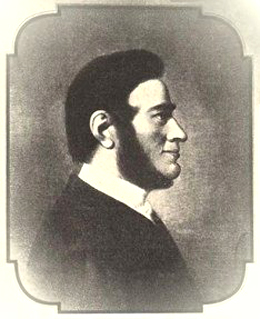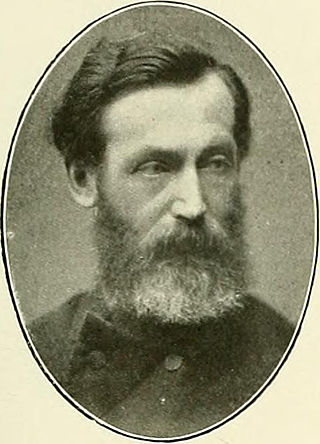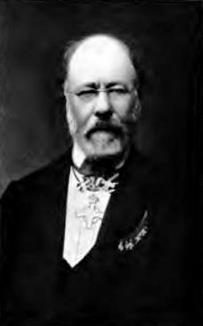Related Research Articles

Carl Borivoj Presl was a Czech botanist.

Johan Martin Christian Lange was a prominent Danish botanist.

Cerastium tomentosum (snow-in-summer) is an herbaceous flowering plant and a member of the family Caryophyllaceae. It is generally distinguished from other species of its genus by "tomentose" or felty foliage. It is a low, spreading perennial native to alpine regions of Europe. The stems and leaves are silvery-grey, whilst the flowers are star-like, white & about 15mm across.

Christian Friedrich Hornschuch was a German botanist.

David Heinrich Hoppe was a German pharmacist, botanist, entomologist and physician. He is remembered for contributions made to the study of alpine flora.
Philip Burnard Ayres (1813–1863) was a British physician, botanist and plant collector. He was born at Thame in Oxfordshire on 12 December 1813. He initially began to collect plants in his native United Kingdom and also in France. Between 1841 and 1845 he issued three exsiccata-like series, among them Mycologia Britannica or specimens of British fungi and with William Baxter another exsiccata under the title Flora Thamnensis. In 1856 Ayres was appointed by Queen Victoria to superintendency of quarantine on Flat Island, Mauritius under governor Robert Townsend Farquhar. Ayres is particularly well known for his extensive plant collections made while in this position. He is also credited for finding the first sub fossil remains of the dodo in 1860. From 1856 to 1863 he traveled through Madagascar, the Seychelles, and the Mascarenes to develop this rich collection of Indian Ocean plant specimens. These specimens are now in the herbaria collections of the Natural History Museum, London, the Royal Botanic Garden Edinburgh, the Royal Botanic Gardens, Kew, the Missouri Botanical Garden and the Muséum National d'Histoire Naturelle, Paris. In addition to collecting, Ayres catalogued and sketched the plants in the wild, as was common among nineteenth century naturalists. He also planned to write a book about the flora of Mauritius, but he died from relapsing fever in his home in Port Louis on 30 April 1863 before the flora could be accomplished. Ayres' wife Harriet collected his written records and bequeathed them to the Royal Botanic Gardens, Kew.

Ferdinand Christian Gustav Arnold was a German lichenologist and taxonomist born in Ansbach, Bavaria. Even as a high school student he showed an active interest in botany: "Ich und August Gattinger ... durchstreiften von November 1846 bis zum Spätherbst 1847, Pflanzen sammelnd, die Landschaft von München nach allen Richtungen.".

Marcus Eugene Jones was an American geologist, mining engineer and botanist. Throughout his career he was known for being an educator, scientist and minister. As an early explorer of the western United States, he is known as the authority for numerous vascular plants. Much of his career was spent self-employed in Salt Lake City, Utah. He edited and distributed several specimen series which resemble exsiccatae, among them one with the title Flora of California. Collected by Marcus E. Jones, A. M.. After the death of his wife in 1915, he sold his herbarium and library to Pomona College. In 1923, he continued botanical work after moving to Claremont, California.

Svante Samuel Murbeck was a Swedish professor, botanist, pteridologist and explorer.

Auguste François Le Jolis was a French merchant, judge and botanist.

Friedrich Traugott Kützing was a German pharmacist, botanist and phycologist.

Paul (Pablo) Günther Lorentz was a German-Argentine botanist.
Karl von Keissler was an Austrian lichenologist and mycologist.
Henri L. Sudre was a French botanist.

Harald Lindberg was a Finnish botanist of Swedish parentage. He was the son of botanist Sextus Otto Lindberg (1835–1889).
Alexander Alfonsovich Grossheim was a Soviet botanist of German descent. He traveled widely over the Caucasus region collecting and studying various different plant life. He is most known for Pteridophytes and Spermatophytes species.
Adriano Fiori was an Italian botanist.

Gustav Albert Peter was a German botanist.

Renato Pampanini (1875-1949) was an Italian botanist and mycologist.

Exsiccata is a work with "published, uniform, numbered set[s] of preserved specimens distributed with printed labels". Typically, exsiccatae are numbered collections of dried herbarium specimens or preserved biological samples published in several duplicate sets with a common theme or title, such as Lichenes Helvetici. Exsiccatae are regarded as scientific contributions of the editor(s) with characteristics from the library world and features from the herbarium world. Exsiccatae works represent a special method of scholarly communication. The text in the printed matters/published booklets is basically a list of labels (schedae) with information on each single numbered exsiccatal unit. Extensions of the concept occur.
References
- 1 2 3 4 Kreisel, Hanns (1999) "Wir nannten ihn Vadder". – Werner Rothmaler – ein außergewöhnlicher Hochschullehrer 1908–1962. Greifswalder Universitätsreden, Neue Folge Nr. 90. Greifswald 1999, ISBN 3-86006-131-3 (Abdruck eines Vortrages aus Anlass des 90. Geburtstages von Werner Rothmaler)
- 1 2 3 4 Natho, Günther (2008). "Werner Rothmaler – Stationen seines Lebens". Feddes Repertorium. 119 (3–4). Wiley: 105–111. doi:10.1002/fedr.200811149.
- ↑ "Alchemillae exsiccatae: IndExs ExsiccataID=917028096". IndExs – Index of Exsiccatae. Botanische Staatssammlung München. Retrieved 7 September 2024.
- 1 2 Wer war wer in der DDR?
- ↑ "Lachemilla (Focke) Rydb". Plants of the World Online. Royal Botanic Gardens, Kew. Retrieved 2023-02-17.
- ↑ Valentine, D. H. (September 1962). "Obituary: Prof. W. Rothmaler". Nature . 195: 1050. doi: 10.1038/1951050a0 .
- ↑ Website of scientific circle of students at the University of Greifswald created in 1953 on the initiative of Rothmaler
- ↑ Lamarck at Greifswald in English
- ↑ International Plant Names Index. Rothm.